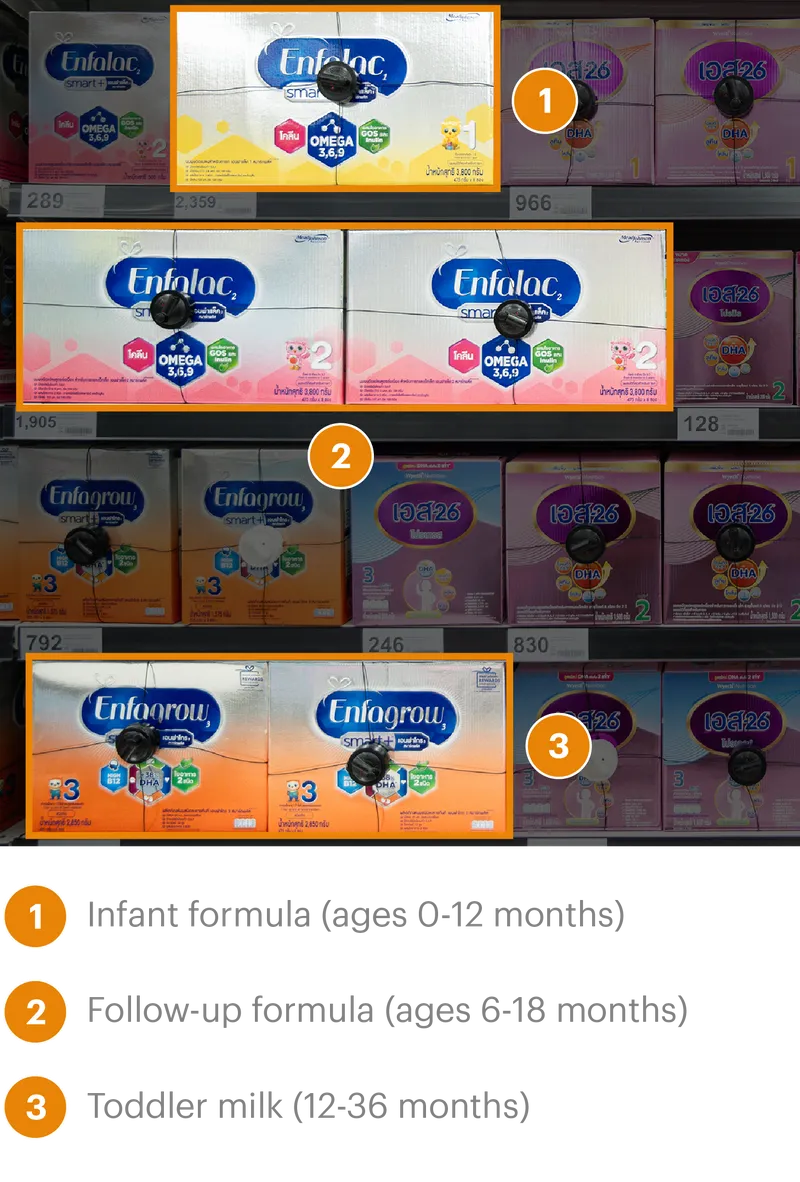When my sons were young, ads promoting formula made especially for toddlers appeared unsolicited in my mailbox. I found them curious. My kids drank cow’s milk when needed. It cost less and worked just fine.
Little more than a decade later, my questions about the product would fuel reporting that took me half a world away, to Thailand, where public health officials were trying to stop similar formula marketing. I found they’d encountered an adversary that many Americans, including myself, might find surprising: the U.S. government.
I started looking at the baby formula industry in the wake of the 2022 shortage, when supply-chain problems and the shutdown of a Michigan formula plant amid contamination concerns led to scarcity. But my reporting soon took another turn.
After academics and health advocates told me that U.S. officials had for decades opposed regulations abroad related to formula marketing, I woke up before dawn one morning last March to watch the livestreamed meeting of an international food standards body in Dusseldorf, Germany. The topic was a new standard on toddler milk — the very product I’d wondered about years before. I saw the U.S. delegation, which included formula industry representatives as well as government officials, raise objections. They were concerned with language mentioning World Health Organization recommendations on banning formula advertising.
After that meeting, I filed dozens of information requests to federal agencies, seeking to understand more about the U.S. position on formula regulation. I reached out to health advocates working for nongovernmental organizations around the world, videoconferencing with them late at night and in the early morning to accommodate different time zones.
I learned countries around the world had sought to outlaw the marketing of toddler formula in recent years, sometimes by extending baby formula advertising bans they already had in place. Health experts say aggressive formula marketing — such as steep discounts and free samples — can make misleading claims and prompt mothers to prematurely give up breastfeeding. The industry has a troubled history. In the 1970s, it was accused of causing thousands of infant deaths in Africa and other developing regions by promoting powdered formula to families without access to clean water.
In statements emailed to me, the formula industry acknowledged that breastfeeding is superior but said families sometimes need a safe alternative.
I knew from experience that the choices parents make in feeding their children are never simple. Breastfeeding has well-documented health benefits, including lowering the risk of infant death and obesity later in life, but it is time-consuming and can be logistically difficult. Still, health officials around the world told me they wanted to make sure that mothers who would otherwise breastfeed weren’t derailed by misleading corporate ad campaigns.
Toddler milk evoked its own set of concerns, I found. Its packages often carried promises of boosting brain and eye health. Extensive studies have not backed up those claims.
The Infant Nutrition Council of America, a trade group, said toddler drinks “meet all legal, regulatory and nutritional science requirements.” The product can “potentially fill nutrition gaps,” it said.
Health officials worried, too, that parents would confuse toddler milk, whose ingredients are less regulated and have drawn criticism from nutritionists, with infant formula. The labeling for both products looks nearly identical in many cases.
Infant Formula Looks Nearly Identical to Toddler Milk on a Grocery Store’s Shelves in Bangkok
Thailand’s Milk Code restricts the advertisement of infant formula, but marketing of toddler milk is generally allowed.

As documents from my public record requests rolled in, I began to see the U.S.’s impact. In Thailand, a 2016 letter the U.S. sent to Bangkok contained a flurry of criticisms and questions about its newly proposed formula marketing ban, including asking if it was “more trade restrictive than necessary.” A memo said the U.S. had also relayed concerns during a bilateral trade meeting with Thailand, as well as on the floor of the World Trade Organization, where such concerns carry an implicit legal threat.
Eventually, Thailand backed down, weakening its proposed advertising ban and allowing formula marketing for children over the age of 1 to continue. My records and other research revealed a trend, showing that Thailand was just one of more than a dozen countries where the U.S. sought to undercut formula restrictions.
The Office of the U.S. Trade Representative — the agency at the heart of many of the efforts — declined to comment on specific cases from our reporting, but a spokesperson acknowledged the office’s “formerly standard view that too often deemed legitimate regulatory initiatives as trade barriers.” With respect to infant formula, the agency’s statement said officials “work to uphold and advocate for policy and regulatory decisions that are based on science.”
For me, it was a visit with a middle-class family in rural Thailand that brought this story home.
Like me, Sumet Aunlamai and Jintana Suksiri had two boys a little more than three years apart in age. The parents had read the health claims about brain and eye development on the formula packaging and chose to spend the extra money to buy toddler milk for both. The boys craved the drink, which their parents gave them whenever they asked because they thought it was good for them.
Both boys gained large amounts of weight. Gustun, the youngest, was nearly 70 pounds by the time he was 3 — the average weight for a 9-year-old. He had trouble moving. Medical tests offered no explanation.
When the boys’ school switched them to cow’s milk, both lost the weight, and Jintana now wonders if toddler milk was the problem.
Watching them play soccer in their driveway one afternoon last September, she told me both her sons, who are 6 and 9, have healthy weights now. Gustun darted about. “His movement is perfect,” she said.

